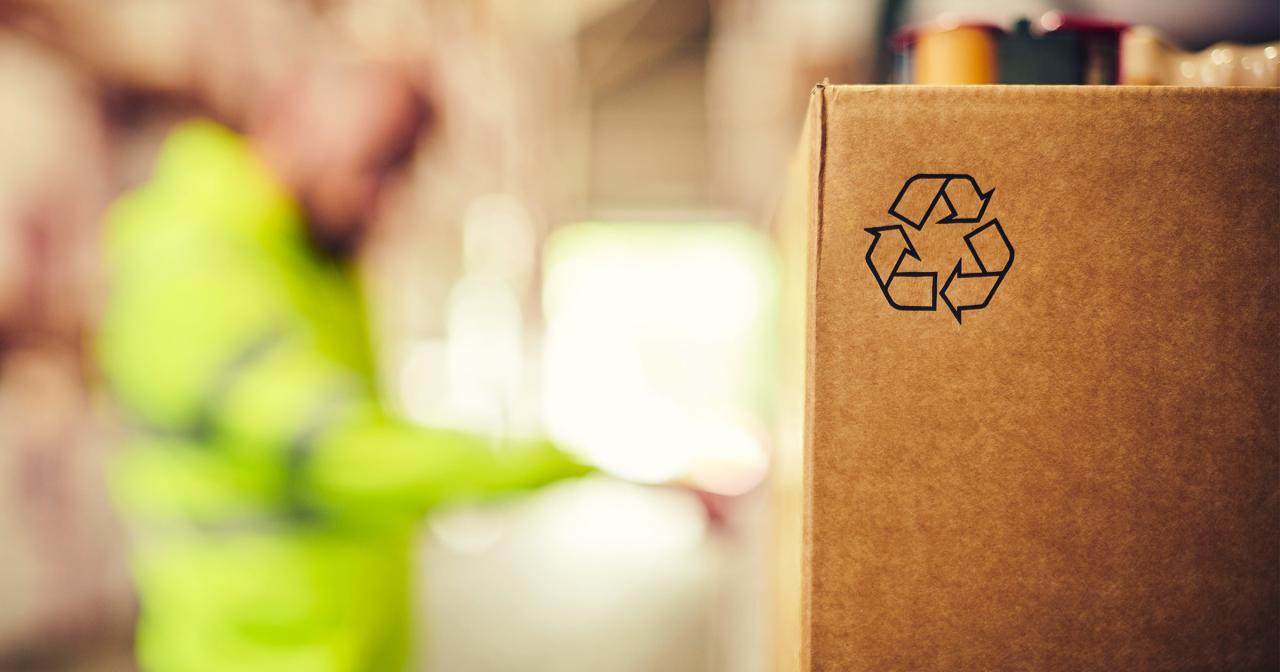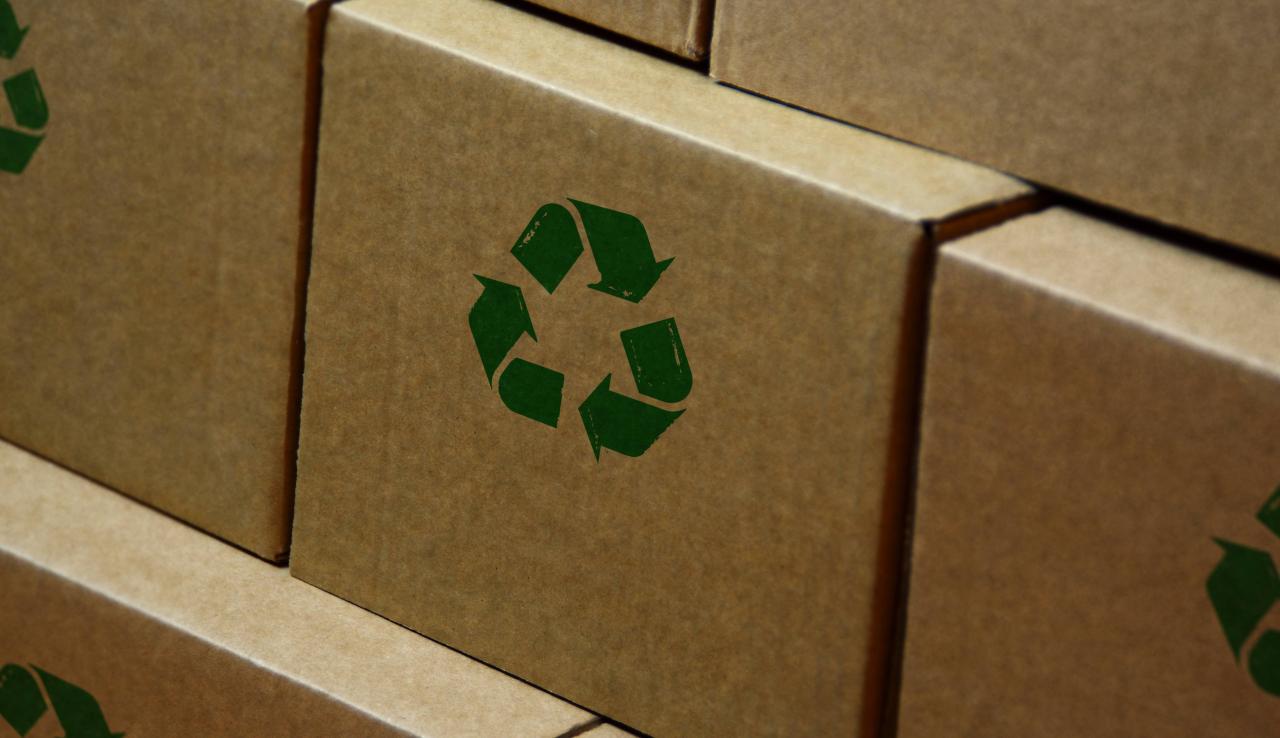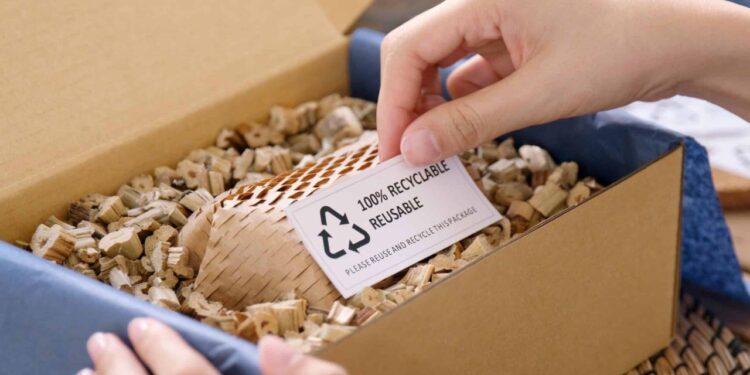The modern consumer landscape is defined by an undeniable shift in values. Where once convenience reigned supreme, a new, powerful force has emerged: consciousness. Consumers today are not just buying products; they are endorsing brands that align with their ethical and environmental beliefs. At the forefront of this movement is a critical, often overlooked element of commerce: packaging. Historically viewed as a protective shell or a marketing tool, packaging is now at the center of the global environmental debate. It’s a tangible representation of a brand’s commitment to the planet. The age of excessive, single-use, non-recyclable packaging is coming to an end, and a new era of sustainable packaging is not just a trend but a fundamental necessity.
This comprehensive guide is a deep dive into the world of eco-friendly packaging. We will explore the critical reasons for this change, dissect the core principles of sustainable design, and journey through the groundbreaking materials that are redefining the industry. We will also confront the challenges, from “greenwashing” to infrastructure gaps, and look ahead to a future where packaging is a force for good, actively contributing to a circular economy.
The Imperative for Change

The demand for eco-friendly packaging is not a passing fad; it is a direct response to a global environmental crisis. The stakes are incredibly high, and the reasons for this industry-wide transformation are multifaceted and urgent.
A. The Environmental Toll of Conventional Packaging
The staggering volume of waste generated by conventional packaging is a primary driver of this change. Made predominantly from virgin plastics and other non-renewable resources, this packaging contributes to a host of environmental problems. Plastic waste, in particular, pollutes oceans, harms wildlife, and can take hundreds of years to decompose, breaking down into harmful microplastics that have infiltrated our food chains. The production of these materials also has a significant carbon footprint, releasing greenhouse gases that contribute to climate change. Every ton of plastic produced generates a cascade of environmental damage, and as consumption grows, so does this footprint.
B. The Rise of Conscious Consumerism
Today’s consumers, particularly millennials and Gen Z, are more informed and ethically driven than ever before. They are actively seeking out brands that demonstrate a commitment to social and environmental responsibility. Research consistently shows that a significant portion of consumers are willing to pay more for products with sustainable packaging. For a business, ignoring this shift is a direct threat to its long-term viability and brand loyalty. Sustainable packaging has evolved from a niche selling point into a core expectation. It is no longer just about the product inside, but about the entire brand experience, from unboxing to end-of-life disposal.
C. Regulatory Pressures and Corporate Responsibility
Governments and international bodies are stepping in to regulate packaging waste. Plastic taxes, bans on single-use plastics, and extended producer responsibility (EPR) schemes are becoming increasingly common. These regulations put the onus on businesses to manage the entire lifecycle of their products, from design to disposal. For brands, proactive investment in sustainable packaging solutions is a matter of both good business and legal compliance, helping to future-proof their operations against tightening environmental laws and mounting public pressure.
The Core Principles of Sustainable Packaging Design
Moving toward sustainability requires a fundamental shift in design thinking. It’s not about making small, incremental changes but about adopting a new framework that prioritizes the planet at every stage of the process.
A. Reduce: Minimizing Material Usage
The first and most effective principle of sustainable packaging is to simply use less. This involves a thoughtful review of a product’s entire packaging suite to eliminate unnecessary components. This could mean removing plastic film wrappers, using lighter-weight materials, or employing design strategies that allow products to be nested or stacked more efficiently for shipping. For example, concentrated products, such as solid shampoo bars or dehydrated cleaning solutions, can be shipped in dramatically smaller, lighter packaging, saving both materials and fuel costs.
B. Reuse: Designing for Multiple Lifecycles
The concept of reusability is a direct challenge to the linear “take-make-dispose” model. Reusable packaging is designed to be used multiple times by the consumer or to be returned to the brand for refilling and redistribution. This could range from glass bottles for beverages to durable containers for cleaning supplies. Pioneers in this space, like the Loop platform, have created a circular system where brands deliver products in reusable containers that are then collected, cleaned, and refilled, effectively eliminating single-use waste. This approach fosters a new kind of consumer relationship based on a shared commitment to environmentalism.
C. Recycle: Ensuring Materials Can Be Reprocessed
For packaging that can’t be reduced or reused, it must be designed for optimal recyclability. This requires careful consideration of the materials and their compatibility with existing recycling infrastructure.
- Monomaterial Design: A significant challenge in recycling is the use of “multi-material” packaging—different layers of plastic, paper, and aluminum glued together. These are nearly impossible to separate and are often sent to landfills. Monomaterial packaging, made from a single type of plastic or paper, is much easier and more efficient to recycle.
- Clear Labeling: Consumers are often confused about what is recyclable. Clear, simple labeling, such as the How2Recycle system, provides unambiguous instructions, empowering consumers to properly dispose of their waste and increasing recycling rates.
D. Regenerate: Using Materials That Replenish the Environment
This principle goes beyond simply avoiding harm and aims to actively benefit the environment. It involves using materials that are compostable or biodegradable, meaning they can naturally break down into non-toxic components, enriching the soil. This is particularly crucial for packaging that is often contaminated with food waste, such as takeout containers or food wrappers. By designing for regeneration, brands can create a truly closed-loop system where waste becomes a resource.
E. Rethink: A Holistic, Systems-Level Approach
Rethinking is the broadest principle, encompassing the entire supply chain and the business model itself. It challenges designers to question fundamental assumptions. Is packaging even necessary? Can the product be delivered without it? It also involves a Life Cycle Assessment (LCA), a scientific methodology to evaluate the environmental impacts of a product from “cradle to grave” or, more accurately, “cradle to cradle.” An LCA helps identify the most significant environmental hotspots—from raw material extraction to manufacturing and transportation—ensuring that sustainability efforts are focused where they will have the greatest impact.
The Materials Revolution
The shift to sustainable packaging is being fueled by an incredible wave of material innovation. Scientists, engineers, and designers are working together to create viable and scalable alternatives to conventional plastics and papers.
A. Biodegradable and Compostable Materials
These materials are designed to break down naturally, leaving behind no harmful residue. This is a game-changer for many food and beverage products.
- Bio-based Plastics (PLA and PHA): Polylactic Acid (PLA) is a polymer made from renewable resources like corn starch or sugarcane. It looks and acts like conventional plastic but is commercially compostable under the right conditions. Polyhydroxyalkanoates (PHA) are naturally produced by microorganisms and can biodegrade even in marine environments, offering a powerful solution for fighting ocean plastic pollution.
- Plant-Based Materials: Mycelium, the root structure of mushrooms, can be grown into custom shapes to create protective packaging that is incredibly light and compostable. Seaweed is also being used to create water-soluble films that can be used for sachets or edible capsules.
B. Recycled and Post-Consumer Content (PCR)
Giving new life to old materials is a cornerstone of the circular economy.
- Recycled Paper and Cardboard: Already a widely adopted and effective solution, recycling paper and cardboard significantly reduces the need to cut down forests and saves energy. Innovations in this space include using recycled content for a greater variety of products and designing packaging that is easily foldable for efficient recycling.
- Recycled Plastics (PCR): Post-Consumer Recycled plastic is made from bottles and containers that have already been used by consumers and recycled. This reduces the demand for virgin plastic and diverts waste from landfills. The challenge here is ensuring a steady supply of high-quality, clean recycled materials and designing new products to accept a greater percentage of PCR.
C. Monomaterials
As mentioned earlier, monomaterials are a key to making recycling truly effective. Brands are increasingly switching from layered, multi-material pouches to single-material solutions, such as all-polyethylene or all-polypropylene pouches that can be easily processed in a recycling facility.
D. Edible and Water-Soluble Packaging
This is the most radical form of sustainable packaging, where the container is either meant to be consumed or dissolves completely, leaving no trace. Edible films made from starch, protein, or seaweed are being used for products like single-serving condiments, beverage capsules, and even water bottles.
The Design & Engineering Challenge

Sustainable packaging is more than just choosing the right material. It’s a holistic design and engineering challenge that spans the entire product life cycle.
A. The Role of Supply Chain
A sustainable package must be viable from sourcing to end-of-life. This requires a shift to more localized and resilient supply chains that can provide a steady flow of sustainable materials. It also involves optimizing transportation to minimize the carbon footprint. Lightweight, efficiently packed goods save fuel and reduce emissions, creating a win-win for both the environment and the bottom line.
B. Life Cycle Assessment (LCA)
An LCA is a critical tool for making informed decisions. It accounts for all the environmental impacts associated with a product, from raw material extraction to manufacturing, distribution, and disposal. For example, while a biodegradable plastic might seem more sustainable than a glass bottle, an LCA might reveal that the plastic’s production consumes significantly more energy, making the glass a more eco-friendly option in that particular context.
C. Designing for End-of-Life
Designers must consider what happens to the package after the consumer is finished with it. This means clearly communicating whether the package is recyclable, compostable, or reusable. The design itself can also guide the consumer, with features that make it easy to separate components or collapse the package for efficient disposal.
D. The Aesthetics of Sustainability
For a long time, “eco-friendly” packaging was equated with a raw, earthy, and often unrefined look. Today, brands are proving that sustainable packaging can be beautiful, modern, and aspirational. Innovative printing techniques, minimalist design, and the use of natural textures can create a premium feel that enhances brand value. Sustainable design is no longer just about function; it’s a powerful tool for visual storytelling.
Overcoming Challenges and Misconceptions
The transition to sustainable packaging is not without its hurdles. Understanding these challenges is key to building a viable strategy.
A. The “Greenwashing” Problem
Greenwashing is the practice of deceptively marketing products or services as environmentally friendly when they are not. Vague terms like “eco” or “natural” can confuse consumers and undermine genuine efforts. Brands must be transparent about their sustainability claims and provide verifiable data to back them up, building trust with their audience.
B. Cost and Scalability Issues
Currently, many innovative sustainable materials are more expensive to produce and procure than traditional plastics. Scaling up production and bringing down costs is a major challenge. However, as demand grows and technology improves, the price gap is expected to narrow.
C. Consumer Confusion
The multitude of new materials and disposal methods can overwhelm consumers. Is a biodegradable product compostable? Should I put this in my recycling bin? Educating consumers through clear labeling, on-package information, and digital resources is critical for ensuring that sustainable packaging actually fulfills its purpose.
D. Infrastructure Gaps
The lack of robust recycling and composting infrastructure in many regions is a significant bottleneck. Even a perfectly recyclable product is useless if there is no facility to process it. Businesses, consumers, and governments must work together to invest in and build a modern waste management system that can handle the full range of sustainable materials.
The Future of Packaging
The ultimate goal of sustainable packaging is to break free from the linear model and build a truly circular economy. This means designing products and packaging so that materials can be kept in a continuous loop, minimizing waste and maximizing value.
-
- The Circular Economy Model: In a circular economy, every product is designed to be disassembled, refurbished, or composted, with every material serving a new purpose. Packaging is a perfect entry point for this model, as its end-of-life is easily predictable and can be designed into the initial concept.
- Smart Packaging and IoT: The integration of technology into packaging will provide new levels of transparency and efficiency. QR codes and RFID tags can provide consumers with detailed information about a product’s origin, environmental impact, and disposal instructions. They can also track packages throughout the supply chain, optimizing logistics and enabling return systems for reusable containers.
- Regenerative Design: Looking to nature for inspiration, regenerative design goes beyond being “less bad” and seeks to actively improve the environment. A regenerative package might be made from materials that actively sequester carbon or replenish the soil, making it a force for positive change.
Conclusion
The evolution of packaging is a microcosm of a larger, more profound societal shift. We are moving from a culture of convenience at all costs to one of responsibility and long-term stewardship. The journey toward truly sustainable packaging is complex, multifaceted, and filled with both immense challenges and unprecedented opportunities. It is not simply about swapping out one material for another; it is a fundamental redesign of how we create, consume, and dispose of goods.
From the macro level of regulatory frameworks and global supply chains to the micro level of a single product’s design, every decision matters. Brands that embrace this change with authenticity and innovation will not only reduce their environmental impact but also build deeper trust and loyalty with their consumers. The pioneers in this space—those who invest in novel materials, advocate for better infrastructure, and communicate transparently with their audience—are showing that profitability and planetary health are not mutually exclusive but are deeply interconnected.
The future of packaging is a future where the box, bag, or bottle is no longer a source of waste but an active participant in a regenerative system. It will be smart, beautiful, and, most importantly, benign to the planet. This requires a collective effort: designers must embrace new principles, engineers must create new materials, businesses must make bold investments, and consumers must demand better and participate actively in the circular loop. The path is long, but the destination is a world where packaging leaves no trace, a world where what we produce and what we consume are in harmony with the natural systems that sustain us all. This transformation is a powerful testament to human ingenuity and a beacon of hope for a more sustainable future.







